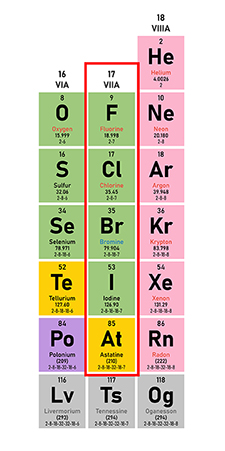What Are Halogenated Solvents?
The family of chemicals called “halogens” include bromine, chlorine, fluorine and iodine, among others. The term “halogen” means they are all in the same column on the periodic table of the elements (if you’re interested, see col. 17 on the right-hand side of the table). Notice all four chemicals are good cleaners. These solvents are used for all sorts of precision cleaning applications. They can be used to remove fluxes from circuit boards or to degrease tiny metal parts. They rinse away particulate and they also can be used to deposit coatings and lubricants. It is an incredibly versatile group of chemicals.
Some companies and countries have restrictions on the use of halogens in fluxes or solder pastes that might remain on PCBs after manufacturing. In additon, some countries are banning some brominated and chlorinated cleaners like nPB (n-propyl bromide) and TCE (trichloroethylene).
If you're currently using these solvents, it's time to start planning your transition to a more environmentally stable cleaning fluid. One good option to consider is Tergo™ XCF2. It cleans just as effectively, if not better, but doesn't have the safety or air quality concerns associated with nPB or TCE.

Column 17 of the Periodic Table of the Elements shows the halogen family of chemicals.
